Dean David Peters has released the Faculty of Health’s Fall 2023 Impact Report
David Peters
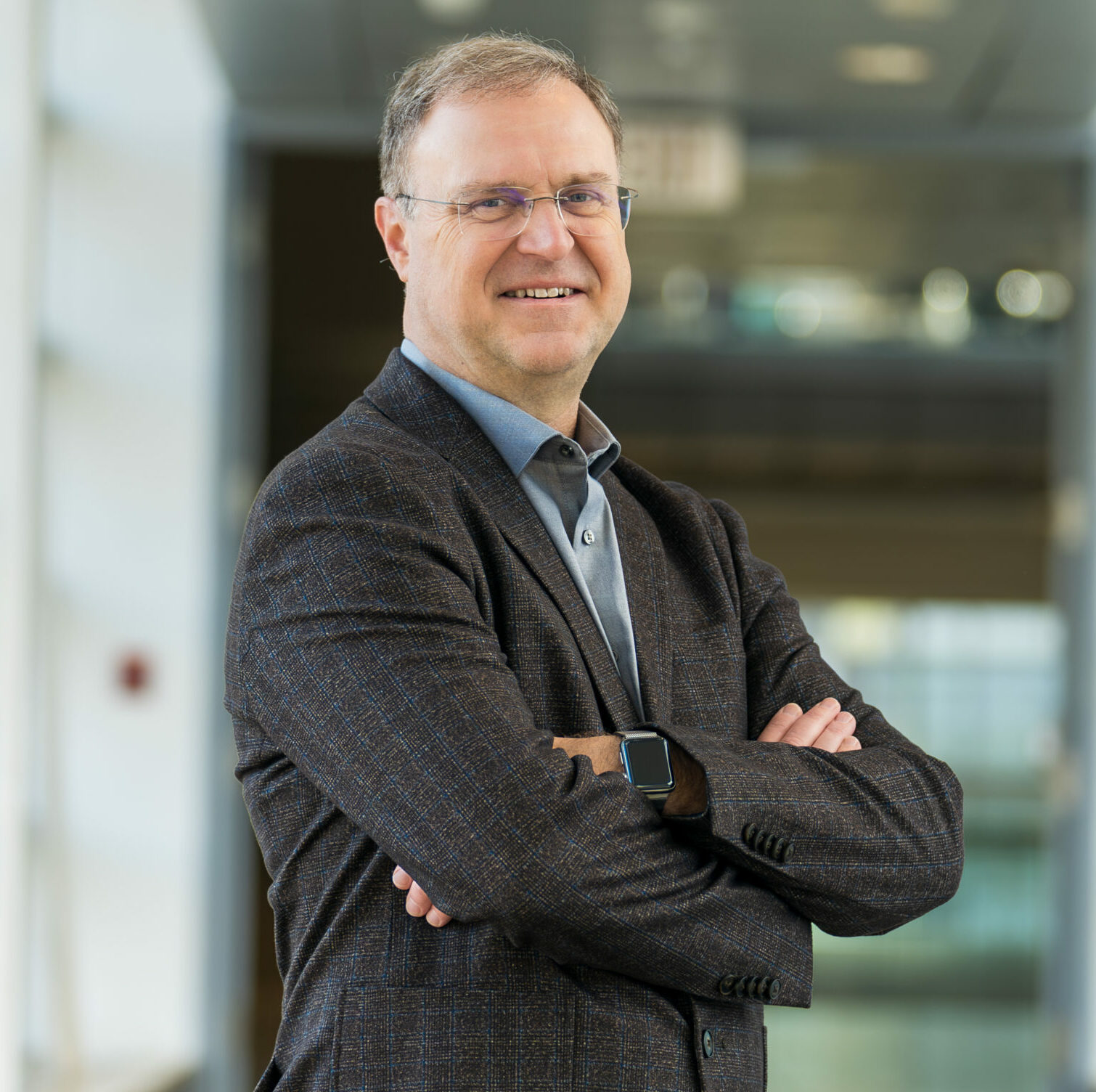

Dean David Peters has released the Faculty of Health’s Fall 2023 Impact Report
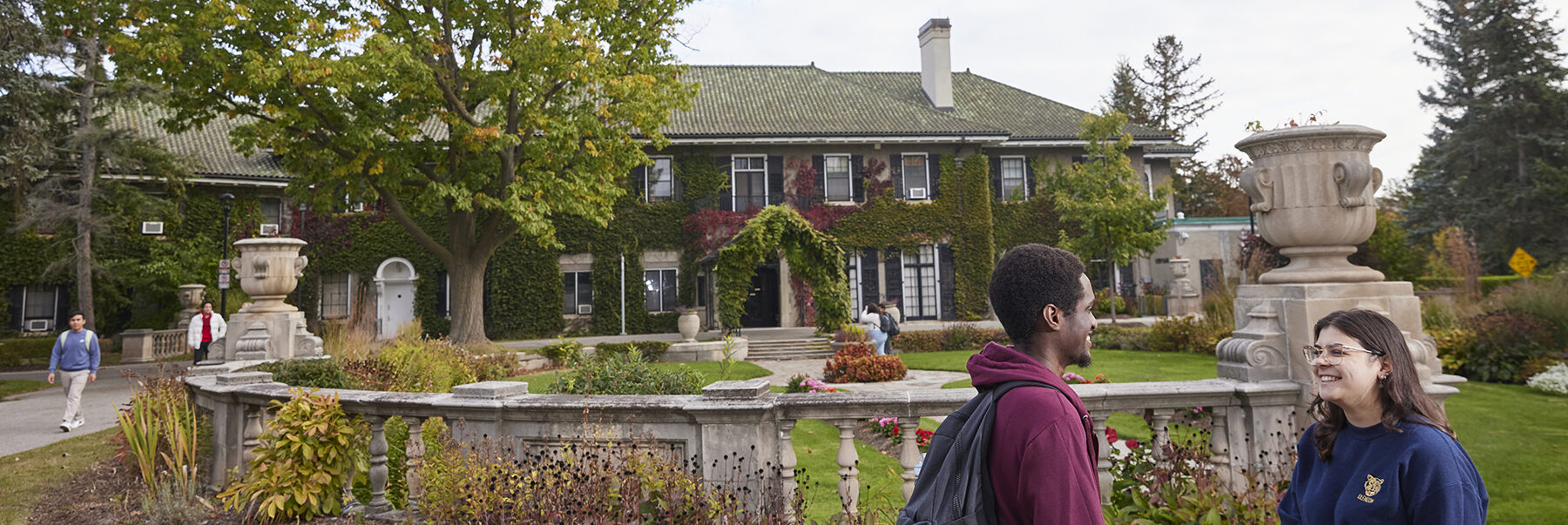
By Ashley Goodfellow Craig, editor, YFile
On Dec. 14, the University signed a memorandum of understanding (MOU) with Noventa Energy Partners Inc. to investigate implementing its revolutionary Wastewater Energy Transfer System (WET) at Glendon. The WET technology uses city-owned underground sanitary lines as a heat source, creating thermal energy from wastewater – from sources such as showers, dishwashers and hot tubs.
This cutting-edge technology could position Glendon as York’s first net-zero campus in advance of the University’s 2040 goal. A feasibility study for this project has been conducted, and the MOU signals the development of a detailed design report as a next step.
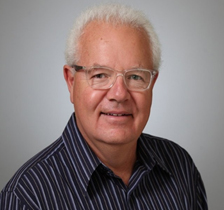
“To reduce the University’s emissions, the facilities department employs a framework to conserve and measure, decarbonize and innovate,” said Brad Parkes, associate vice-president of facilities services. “With sustainable infrastructure already in place to help us conserve and measure, Noventa’s solution enables the University to decarbonize and innovate, moving us closer towards our new target to achieve net zero a decade sooner. Transitioning Glendon to a low to no-carbon environment will lead the way for the rest of York’s campuses.”
This collaboration not only marks a significant leap in sustainable practices, but also brings substantial opportunities to the York University community.
The innovative approach is projected to not only eliminate scope 1 carbon emissions but also deliver substantial cost savings for the University. Noventa’s solution would create operating cost savings compared to the University’s current fossil fuel system, bring more than $2.5 million in savings compared to the prospect of system electrification – a common solution to reduce emissions – and retire $19 million in deferred maintenance on the Glendon campus over the life cycle of the project
The project is also a springboard for research and academic exploration. The collaboration with Noventa opens doors for a unique Living Lab model, offering unparalleled research and learning opportunities for faculty and students across various disciplines.
Faculty members from the Lassonde School of Engineering, the Faculty of Science, the Faculty of Health, the Faculty of Environmental & Urban Change and the biology program at Glendon could have opportunity to engage in related research and experiential education. For example, ongoing studies in wastewater heat recovery at Lassonde align with this ambitious project.
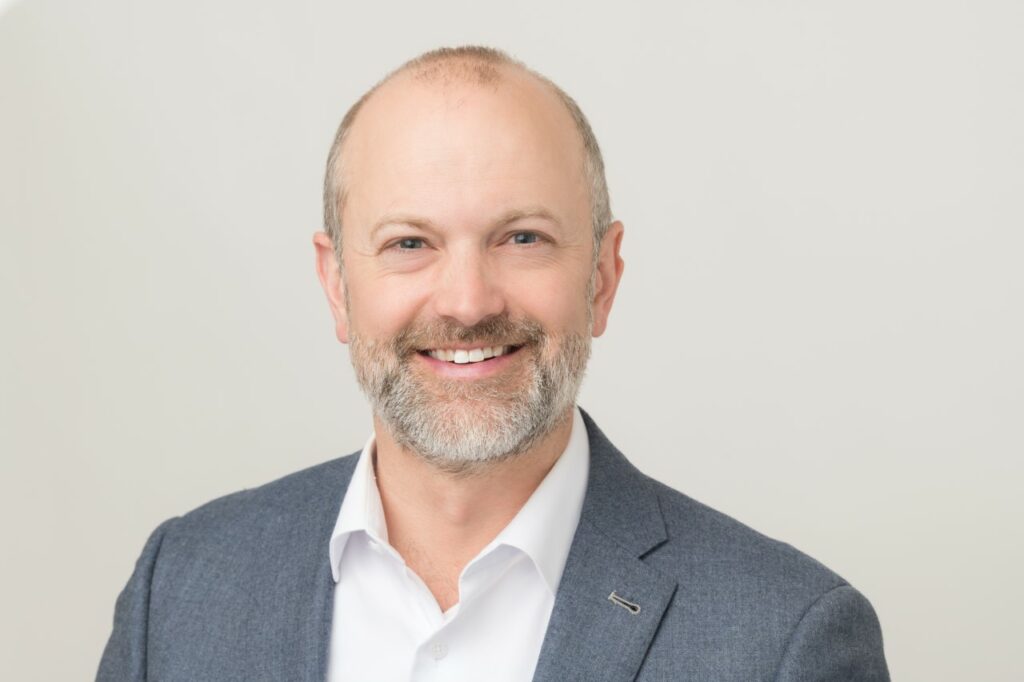
“Sustainability solutions are prime for research, as we’re moving toward technology that leverages what already exists to reduce emissions in a way that is efficient and cost effective,” said Mike Layton, York’s chief sustainability officer. “Water running through heat pipes is essentially wasted energy. This initiative gives us the opportunity to harness that energy for something tangible, while creating opportunities for our students, faculty and researchers to play an active role in expanding our collective understanding of circular energy.”
This groundbreaking initiative is an example of York University’s commitment to sustainability and to its leadership in driving tangible change. It was made possible by the diligent work of teams in the Department of Facilities Services, including Associate Vice-President Brad Parkes and Director of Utilities and Energy Management Steve Prince.
As the University continues to champion environmental responsibility, it positions itself, its faculty, staff and students as drivers of innovation.

By Ashley Goodfellow Craig, YFile editor
Utilizing AI, such as ChatGPT, can serve as an invaluable tool in simplifying holiday tasks. Though some may have reservations about using AI due to concerns about privacy, or uncertainty about its capabilities, ChatGPT offers settings to help keep data secure such as turning off the “chat history and training” setting.
To protect your privacy while using ChatGPT, you can also take the following steps:
Avoid sharing any personal information such as your name, address, phone number, email address or financial information, says Vidur Kalive, artificial intelligence architect lead for York University. Kalive also suggests using a virtual private network (VPN) to encrypt your internet traffic and hide your IP address.
Set up with a user-friendly interface, ChatGPT was designed to be accessible even to those less familiar with technology. For holiday planning tasks, it can guide users through suggestions and solutions tailored to their individual needs.
“A well-structured prompt will ensure that ChatGPT gives you useful, relevant information,” says Kalive. “Prompts are the inputs that you provide to ChatGPT to generate a response.”
To write effective prompts, consider the following tips:
Example prompt: You are a chef who specializes in holiday cuisine. Create a Christmas dinner menu that includes a main course, side dishes and dessert. You will be serving eight guests. Two of them are vegetarians.
Below are some examples of how AI, and tools like ChatGPT, can trim planning time for the holidays.
Food planning: One significant advantage is ChatGPT’s ability to plan and organize shopping lists and create them from recipes. It will also offer recipes for anything from appetizers to desserts to festive drinks. It can curate recipes and meal plans tailored to dietary needs. Planning a cooking schedule is another helpful tool AI offers.
Gift items: Using AI to generate gift lists based on preferences, budget and recipient details can inspire new ideas and save time shopping in crowds.
Greetings and messages: With the right prompts for tone, AI can expertly craft personalized greetings and messages. Using AI-generated images, personalized holiday cards can also be easily designed. Crafting poems and creating stories and songs with a personal touch are also options for holiday-related AI content.
Consider this short poem, generated by ChatGPT:
At York University, the campuses are aglow,
Faculty, staff and students in festive flow.
Amidst winter’s charm and joyous sights,
Shared moments shine in holiday delights.
Decorating: Understand the latest decorating trends, or where to find specific decorative items, to make your space more festive.
Holiday-themed activities: For those who enjoy outings, experiences and more, ask ChatGPT to summarize activities in the area or provide a few holiday-inspired games to play with family and friends.
Travel: Those planning travel during the festive season can rely on AI assistants to generate itineraries, provide real-time updates on weather or traffic conditions, offer directions and even suggest offbeat local experiences.
By harnessing the power of AI in holiday planning, individuals can streamline preparations, reduce stress and create more time to spend with friends and family.
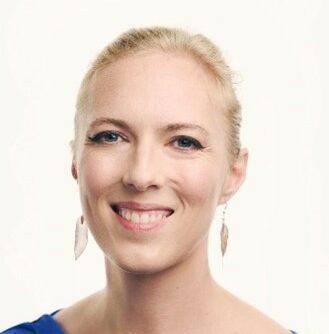
Faculty of Science Professor Sarah Rugheimer talks to CBC’s ‘Quirks & Quarks’ about why temperature in Nunavut does rise when the sun doesn’t set
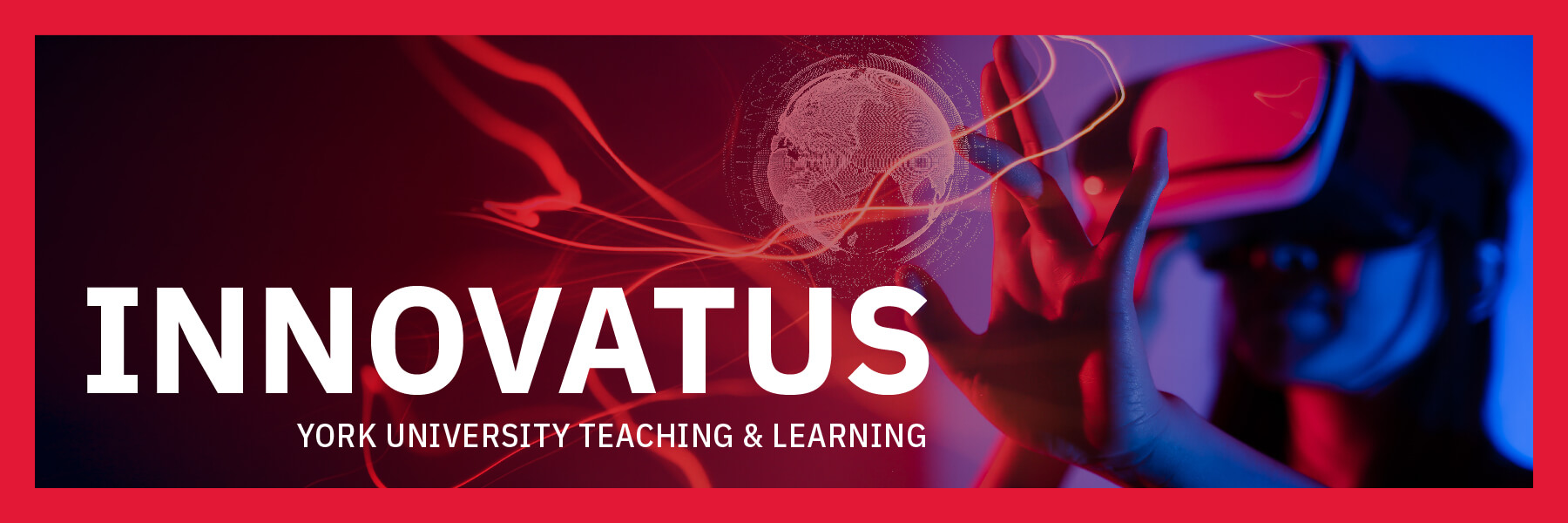
Health equity master of arts students challenge their preconceived notions of allyship as they apprentice themselves to Indigenous and racialized community organizations – harvesting sweet water (maple sap), protesting pipelines and supporting birth workers – as part of their experiential education component of graduate coursework.
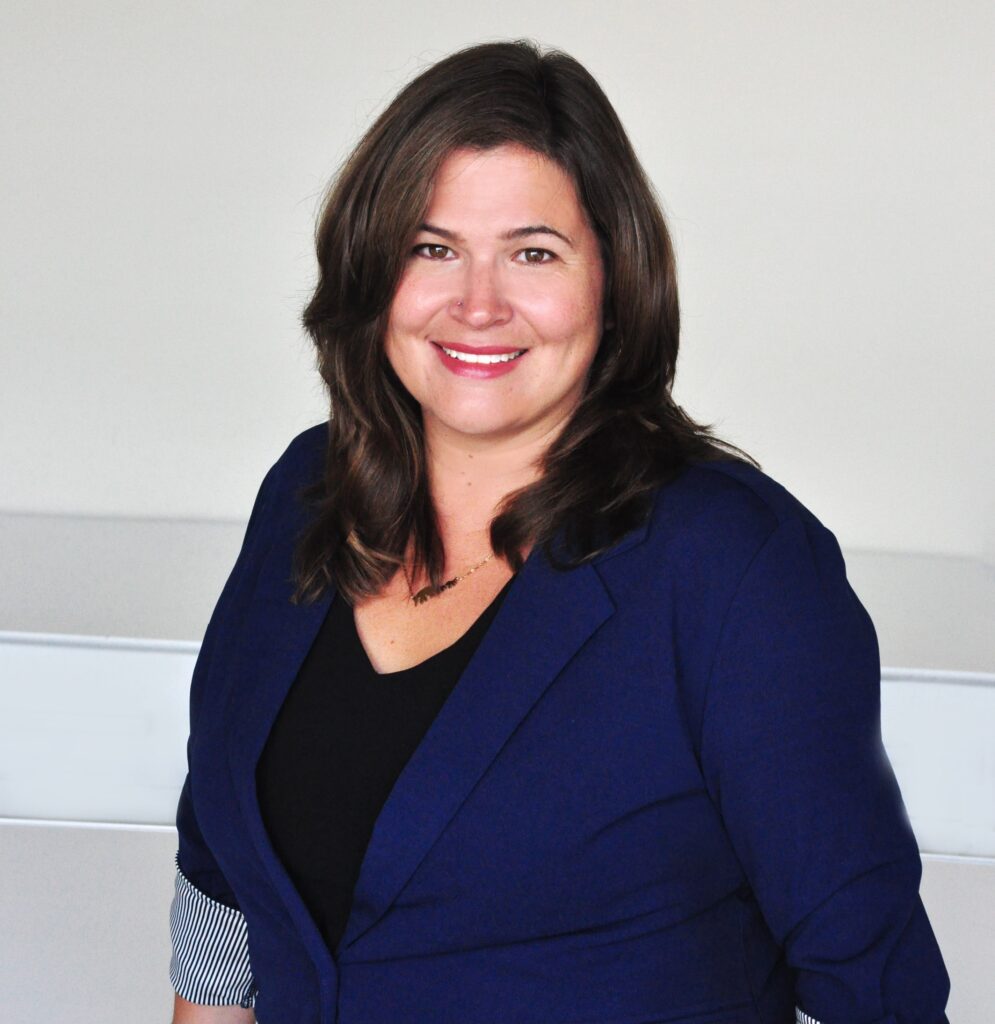
A graduate student designer learns to engage with user communities as part of human-centred design, inspired in part by her family’s care for a grandparent with dementia.
Black research professors from across York University provide mentorship and training to Black graduate students, as part of the Faculty of Graduate Studies’ commitment to identifying and dismantling the barriers facing racialized and underrepresented populations in graduate research and education.
The stories in this month’s Innovatus give us a glimpse into the new faces and new pathways of graduate education at York University – exemplifying both our 60-year tradition of engaged, progressive teaching and learning, and our enthusiastic embrace of new frameworks, new methodologies and new challenges, as we look to the future.
York’s Faculty of Graduate Studies (FGS) was established in September 1963 and opened its doors to York’s first graduate cohort of just 11 students one year later, in 1964. This academic year, we celebrate our 60th anniversary and, with it, a remarkable history of meaningful and challenging graduate research and pedagogy.
York was the first university in Canada to offer a PhD in women’s studies and the first to accept doctoral dissertations written in an Indigenous language. Knowledge creation for a better world has always been at the heart of what we do.
We continue to lead both in our commitment to engaged research and in the values at the core of York as a university: excellence, equity, access, sustainability, diversity and decolonization among them. These values guide the research that is conceived and created in collaboration between students and supervisors and – equally – the inclusive approach to graduate education and research that shapes that research, with an emphasis on engagement, collaboration, depth of thought, expanded conceptual horizons and broken boundaries.
As we look forward to the next 60 years of graduate education at York, we face multiple challenges and possibilities, ranging from the need to decolonize how we conceive of intellectual property and authorial autonomy to the rapidly changing technological landscape of artificial intelligence and machine learning. We are adapting to these, as we rise to meet the needs of a changing graduate student population whose devotion to research and professional development is matched by other commitments – to their families, their communities and the world we share. The challenges and possibilities presented are vast and, as we face them, I am encouraged by the incredible innovations and new pedagogies already emerging in graduate studies: in the stories collected in this issue, and in other initiatives, from experiential education, like the Cross-Campus Capstone Classroom for graduate students, to professional development, such as our new Scholarly Skills brown bag workshop series, to best practices in supervisory relationships and pedagogies, as collected by the FGS Supervisory Support Hub.
The task of FGS has always been knowledge creation as a collaborative enterprise. I invite you to read these stories and come join us to see where that enterprise takes us next.
Sincerely,
Alice MacLachlan
Dean, Faculty of Graduate Studies
Faculty, course directors and staff are invited to share their experiences in teaching, learning, internationalization and the student experience through the Innovatus story form, which is available at tl.apps01.yorku.ca/machform/view.php?id=16573.
In this issue:
Graduate physics professor shares machine learning knowledge with academic community
Joel Zylberberg, an associate professor in the Department of Physics at York, is expanding education on machine learning to graduate students in science across the province.
Graduate students see health equity in practice
Experiential education opportunities give graduate students studying health equity an opportunity to learn directly from those experiencing inequity.
Grad course teaches inclusive, human-centred design research
Inclusive, human-centred design methods have a big impact on product design and accessiblity needs, says grad student Rupsha Mutsuddi.
Professors help racialized grad students navigate academy
Roundtable discussions held by the Faculty of Graduate Studies have led to work that reduces isolation and builds community for racialized students.

By Elaine Smith
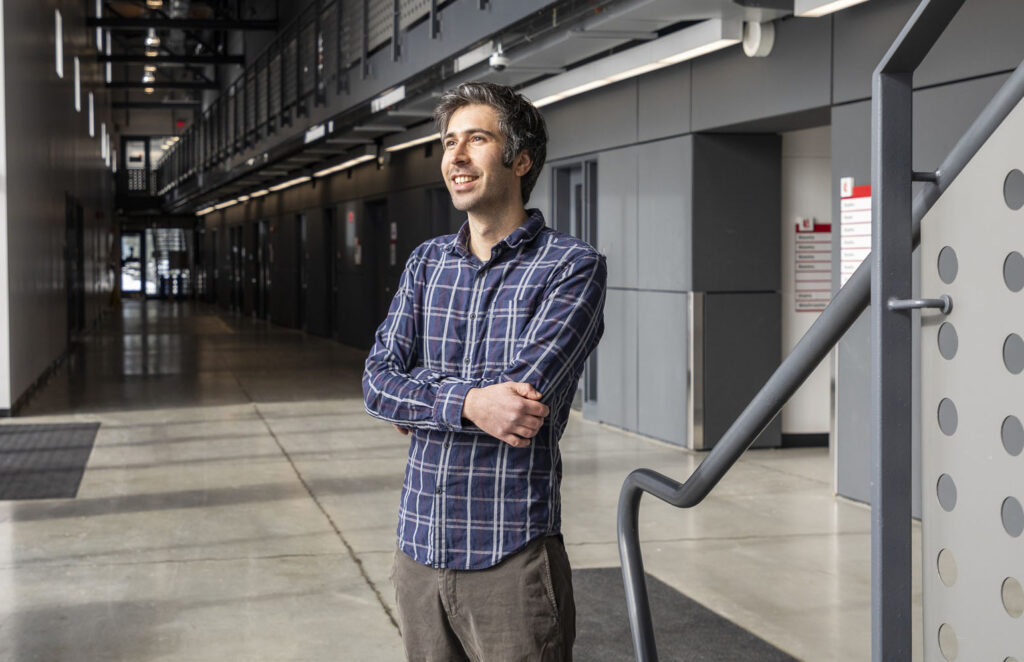
His course, Deep Learning for Physicists, made its debut in 2021 and was repeated in 2022. Its positive reception encouraged Zylberberg to think more broadly, and this year he is offering the course through the Fields Institute to graduate students from the 12 Ontario universities that are members of the institute.
“I like the idea of having more downstream impact from my teaching, working with a class of 35 rather than five,” Zylberberg said. “The applications are pretty diverse; students are working with everything from space science to quantum mechanics. I get to interact with all of this fun science through a set of methods that I know pretty well.”
He noted that the core machine learning ideas date back to the 1980s and 1990s, “but more sophisticated hardware now allows us to make models on a different scale.”
“Machine learning methods have come to dominate a lot of quantitative work and I wanted to give graduate students a strong foundation,” he continued. “Computer science students may have done a course or two in machine learning, but there’s no undergraduate course available for natural science students. Most of the students who enrol in the course have a pretty sophisticated mathematics background with solid undergraduate training in calculus. About half of them now have some prior machine learning experience and come to the course to learn to think about this topic in a more systematic way.”
The first half of the course is devoted to understanding the theory of why systems are built in a particular way and how they work; the second half of the course focuses on applying the theory. The assignments require students to make various machine learning applications and their final project asks them to solve a scientific problem using the course methods.
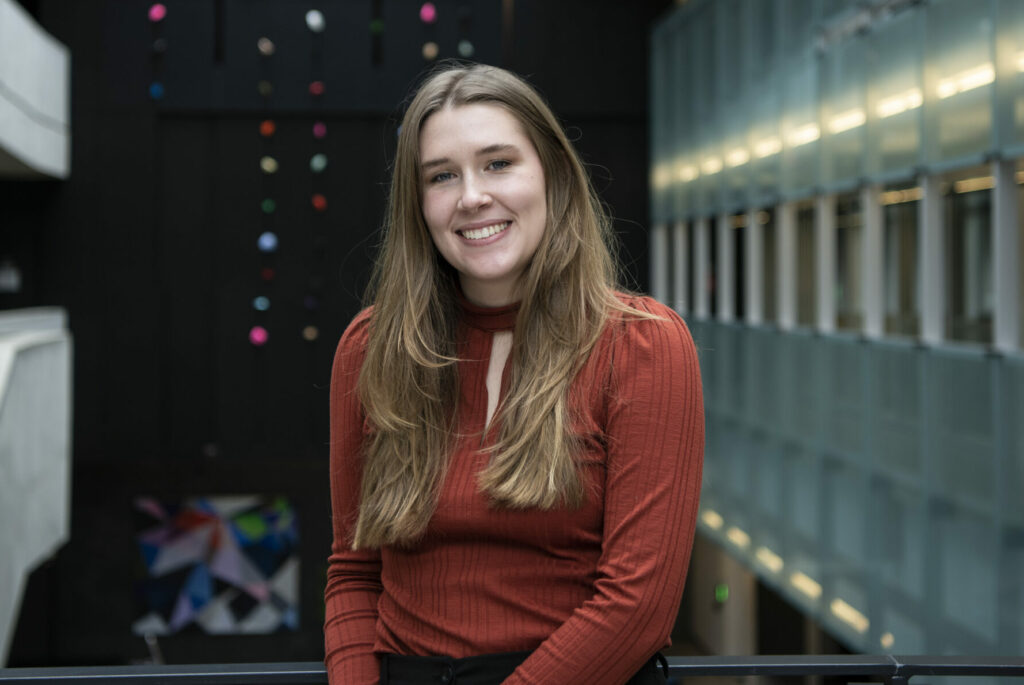
Jordan Krywonos, a York PhD student in cosmology, took the course last year and now serves as a teaching assistant for the course.
“My supervisor had an idea for a project that involved machine learning, but neither of us had experience with these methods,” said Krywonos, who is based at the Perimeter Institute in Waterloo, Ont. “It was a good opportunity to have expert guidance in how to solve any machine learning problems we encountered.”
She applied machine learning to her work in predicting the dark matter halos for a population of galaxies, a project Krywonos scaled up afterward.
“I continue to use the course techniques for this ongoing project,” she said. “I’m trying various machine learning algorithms to see which one has the best performance.”
In another example, one of the graduate students in Zylberberg’s lab found a way to use machine learning to see glowing cells in a mouse’s brain more clearly by using a model that removed much of the data noise from the measuring device, improving the signal-to-noise ratio by a factor of 20.
During the course, Zylberberg has the class review research papers together so they can analyze the machine learning applications employed in each study. For Krywonos, it has been helpful, since machine learning is being used more frequently in cosmology today.
“When I read through a research paper now, I can understand and analyze it better,” she said.
This year’s class is being taught in hyflex fashion: all of the students, whether at York or at other universities, have the option of coming to class in-person or joining via Zoom. The online option allows students across Ontario to enrol in a valuable course to which they wouldn’t have access otherwise, while the in-person option provides students with the opportunity to enjoy a traditional classroom setting. No matter which option they choose, Zylberberg aims to provide them with an equitable experience.
“We’ve gotten a lot of practice using hybrid formats over the last few years, given the pandemic,” Zylberberg said.
The final few sessions of the class are devoted to a mini-conference where the students present their projects, honing skills that will be useful in the workplace.
“Scientists need to be able to communicate what they are doing and why,” Zylberberg said. “It’s a broadly useful skill in academic research, as well as in industry where one might be selling a product or pitching a new venture to investors.”
Cheryl van Daalen Smith, FGS associate dean, academic said, “With its relevant subject matter, its accessible delivery mode and its broad reach, Deep Learning for Physicists is an example of the innovative graduate courses that the Faculty of Graduate Studies is proud to offer.”
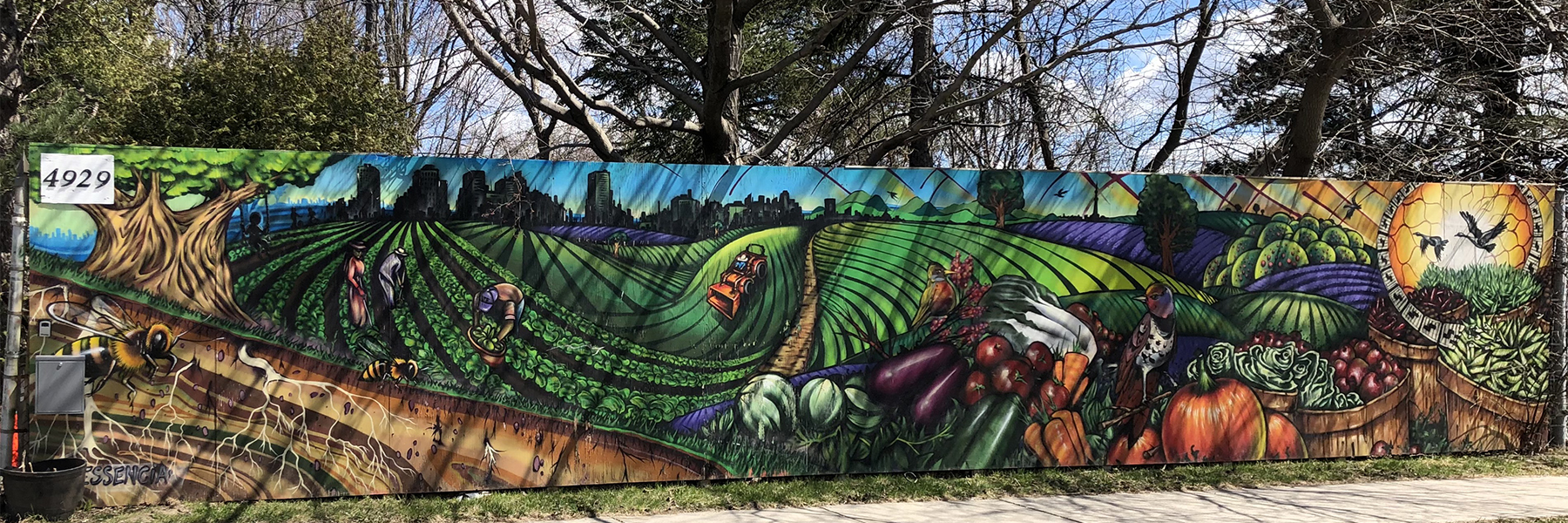
By Elaine Smith
In addition to teaching relevant theory, Vorstermans, an assistant professor of critical disability studies, requires students in her course to engage with small organizations that are doing grassroots work. She also brings in speakers from such organizations to share their work experiences with the class.
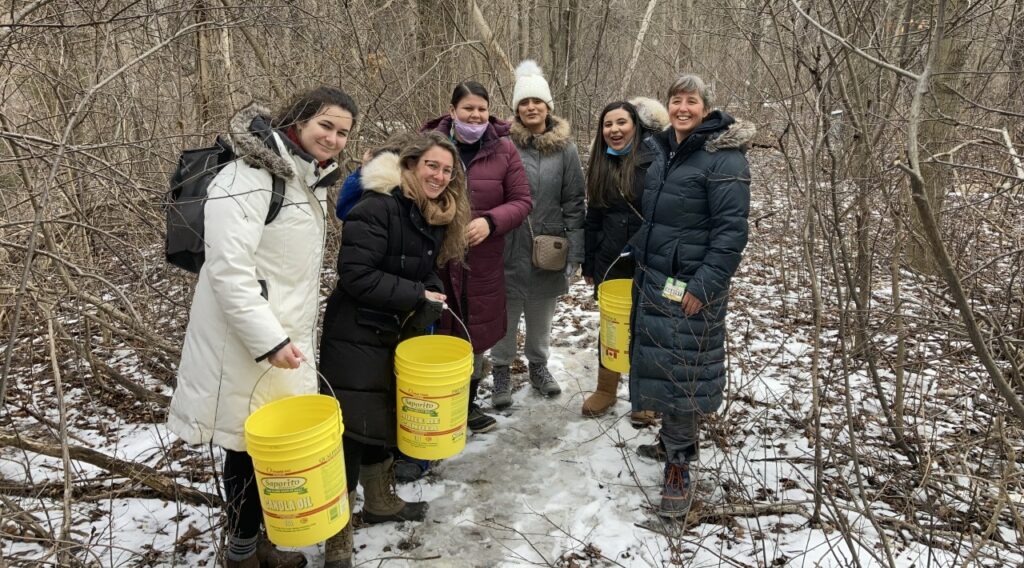
“I want the students to engage with the people doing that work on the ground and understand what that looks like,” said Vorstermans. “We talk about community engagement in research and intersectionality, and I think it’s important for students to experience that and have time to think, reflect and debrief as part of their academic training, since they’ll likely be working in policy and different systems of care.
“The idea is for them to be close to the people who are experiencing the policies, theories and concepts my students are learning about: those who experience inequity.”
The organizations that provide Vorstermans’ students an opportunity for EE include: the Sweetgrass Roots Collective, an Indigenous collective that works to re-indigenize urban spaces, doing land- and place-based education, earthwork, arts and storytelling, to plant and steward land at Black Creek Community Farm, which is next door to York’s Keele Campus; Community Peacemaker Teams, an advocacy organization that describes itself as building partnerships to transform violence and aggression; and the Ocama Collective, “a community-directed group of birth workers of colour, living and working in Tkaronto [Toronto], who are dedicated to the reclamation of traditional and holistic childbearing and birthing practices amongst IBPIC folx” (sic).
“Learning from people experientially is powerful,” said Vorstermans, and both Flanagan and recent student Humairaa Karodia agree.
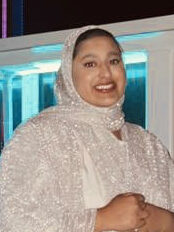
“The group project was the highlight of the course, because it allowed me to immerse myself into the real world,” said Flanagan. “We were doing research with a purpose, so we could see it come to fruition, see the end result and see that it made an impact.”
Flanagan and the four other students on her team worked with the Indigenous Wet’suwet’en people of British Columbia who have been protesting plans made by large corporations to build pipelines on their lands – projects that don’t have the tribe’s consent.
“We worked as an ally to support the Indigenous community with their protest, document it and ensure it got proper coverage in the media,” said Flanagan. “We provided the story from the perspective of the Indigenous community and we helped gather information so we could support the protest, researching the amount of money the RCMP was spending on the protest, including blockades and arrests of Indigenous people. We tried to find numbers so we could provide a clear look at how much public money goes into this.
“There were a lot of nuances, and we filed a freedom of information request, going through that whole process. We built skills around how to find information people try to conceal. It brought to light what is transparent and what is not.”
Their experience also caused team members to consider their own privilege, something they all discussed.
“We talked about how to form a genuine allyship and avoid tropes of the white saviour,” she said. “It helped us stay grounded. We were constantly asking questions, since we had no lived experience with the issue.”
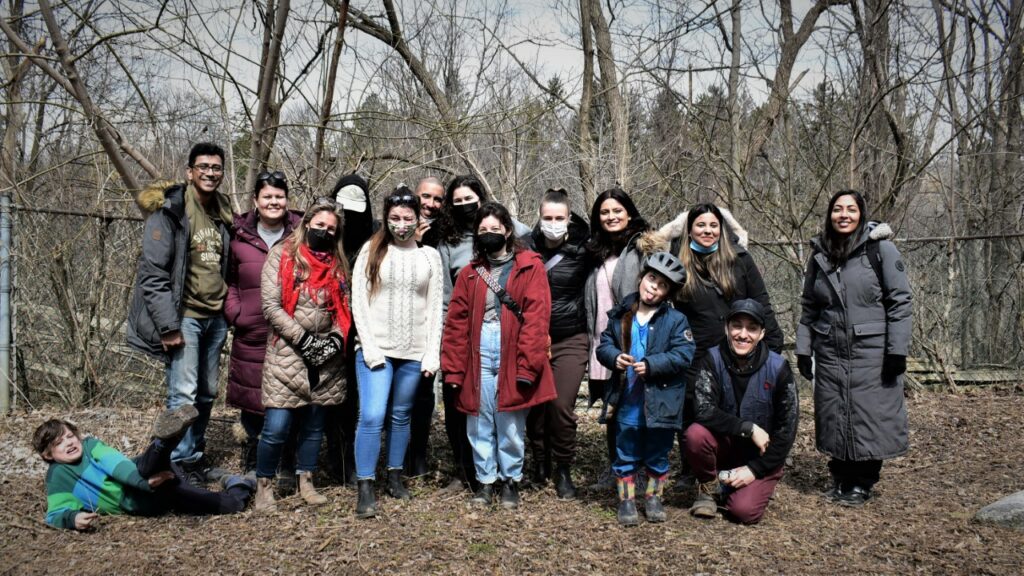
Karodia, a master’s student in health policy and equity, chose to work with the Sweetgrass Roots Collective to harvest sweet water because she remembers childhood trips to maple syrup farms and was also eager to give back to the Indigenous community during a time of reconciliation.
“This was deconstructing what I knew about maple syrup,” she said, referring to sweet water, also known as sap. “And after all the years of hurt inflicted on the Indigenous Peoples, they still welcome settlers with open arms, asking us to come learn from them and join them. Forming these spaces allows us to see the common ground we all hold. Under the scope of human rights, this type of bonding, trust, and collaboration humanizes one another and we begin to feel like we are one body and obliged to protect one another.”
Karodia found many similarities between Indigenous Peoples and Muslims in Canada, including adherence to a lunar calendar and promoting gratitude and sustainable living.
“The way they hold their natural spaces and respect every living creature is very similar to Islam, and the West has discriminated and looked down on Islam in the same way they have on Indigenous practices and beliefs,” she said. “When we talk about agency, we think about protests and demonstrations, but bringing awareness can also be through intimate spaces like this, about bolstering your community together. Even the smallest action, such as boiling sweet water and canning it so it can go to Indigenous people throughout the province, makes a difference.”
After their EE opportunities, the teams each presented a concept they learned during their work and related it to their classroom learning. Their presentations fostered thought-provoking discussion that Flanagan found “very rewarding.”
“This practical experience was so refreshing,” she said. “It was the first time I’d done research in a group setting and the team dynamic was really enjoyable. We build some concrete skills that we could put on a resume. It was great that Professor Vorstermans offered us this opportunity.”
For her part, Vorstermans says students’ graduate work “focuses a lot on theory. When you put that together with work on the ground, you realize that things can be complicated and difficult.
“As the students move into expert mode as researchers, they need to know that their learning should be directed by those experiencing harms, injustices and oppression,” she said. “Listening is an important skill.”

By Elaine Smith
“It has had a big impact on me, and I am planning to continue on to pursue a PhD that focuses on this approach,” said Mutsuddi, who will graduate in the spring and focuses on doing research and design using a health-care lens. “It’s unlike anything I’d come across before in my design education.”
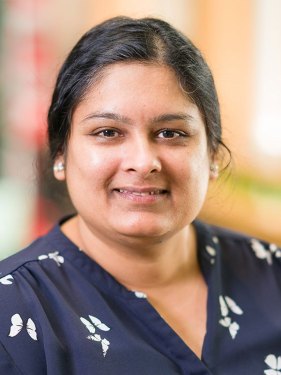
Desai taught the research methods course in 2023 and uses inclusive, human-centred design methods in her own accessibility research. Inclusive design places users and their context at the centre of the development process so the designer can create products that are responsive to their needs. It requires the researcher to engage with the user community to determine what their needs are before proceeding with a design, and Desai believes this approach is something all design students should understand before joining the workforce.
“My objective is to introduce students to various user-centred design methods,” said Desai. “It means creating an empathetic connection with people. It’s more than just doing a survey and an interview. You need to listen to people’s stories and have the desire to develop a connection. You need to understand your population. It takes time and effort.”
Mutsuddi can attest to the patience required. She is interested in design for people with dementia, an interest that sprang from watching her own family care for her grandfather, who suffered from dementia before passing away more than a decade ago.
“You get the best results [from people with dementia] when you are discussing an issue as part of a conversation around the context of people’s everyday lives,” Mutsuddi said. “It’s a method called contextual inquiry. If you’re interested in designing more accessible technology, you ask people to describe the technology they use in their daily lives, whether it’s a coffee maker or a transit app on their phones. Then, you can see the features they like.
“Human-centred design involves the community and users from the beginning of the process to the end, compared to usability testing, which asks people to test a product once it’s developed. You want to understand their needs from the very beginning.”
Desai has found that post-COVID, students aren’t comfortable talking to people, but human-centred design requires engagement. She has them do relevant exercises in class, such as interviewing each other as a way to develop empathy for classmates. She also teaches them about other ways to get people to open up, such as playing games together to get insight into their choices and start them talking. One of her students, she noted, collected relevant images and news stories to show the interviewees as a way of getting them to discuss their own experiences.
In doing human-centred design research, understanding the power balance is very important, as is taking cultural considerations into account, said Desai.
“Often, people are not open to talking about their vulnerabilities, so you need to develop empathy first, otherwise there’s a power imbalance. You have to understand ways or methods to distribute power or you won’t get information that is reliable and relevant to your design. And [consumer] behaviours may be different depending on cultures, such as with the cars we buy and drive.”
One thing seems clear: understanding inclusive, human-centred design can only benefit Desai’s students as they look toward the job market. LinkedIn, the social media site used for networking and job hunting, calls it “an emerging field,” and the National Institutes of Health in the U.S. notes, “Over the last decade, there have been increasing examples of the use of [human-centred] design thinking for global health.”
“I see it in a lot of job postings and my colleagues tell me that it’s important for them, too, because industry sees value in it,” said Mutsuddi. “It’s bigger in Europe and Australia, but it’s just emerging in Canada and we need to catch up. I believe it will become more of a focus not just in the design industry but in other industries.”
Luckily, all of Desai’s students will be well prepared.
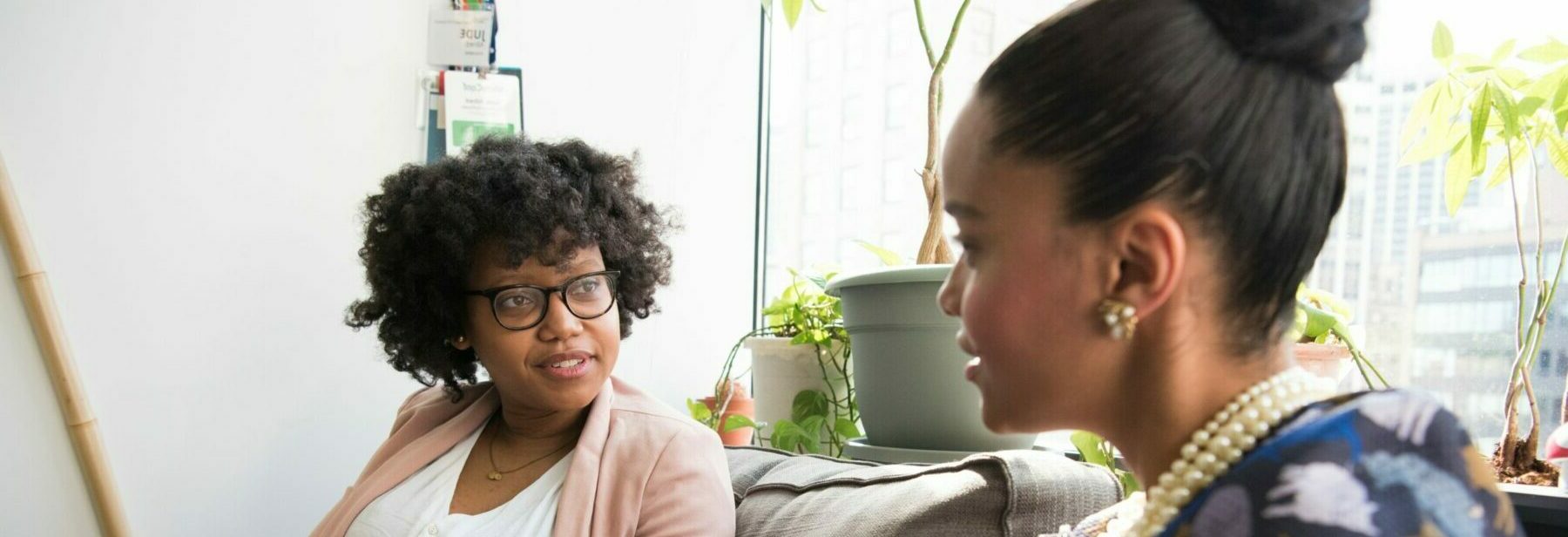
By Elaine Smith
The roundtables revealed lived experience of Black graduate student isolation and a pressing need for mentorship and community building. FGS hosted several conversations with Black graduate faculty, folding in Black graduate students to co-create a plan to address isolation and lack of community. It culminated in a Fall 2023 community gathering.
The Faculty’s work to reduce isolation and build community reflects an earlier FGS commitment to “partner with various programs at York and in the broader community to identify and dismantle the barriers that arise serially and increase over time to disadvantage and dissuade Black students from pursuing graduate studies, especially doctoral studies, in every discipline.”
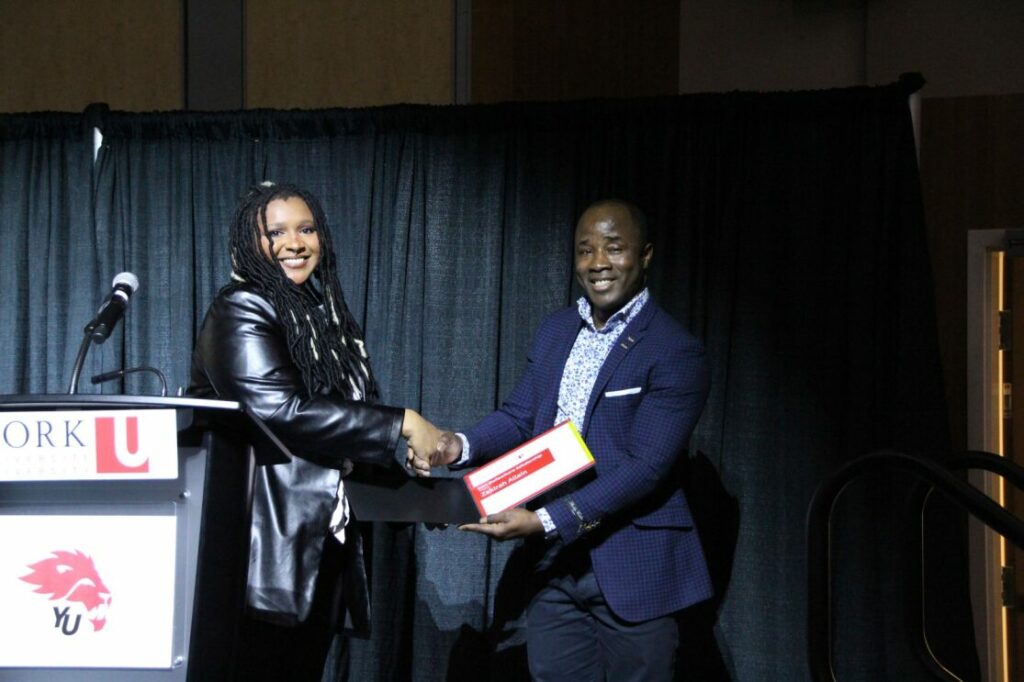
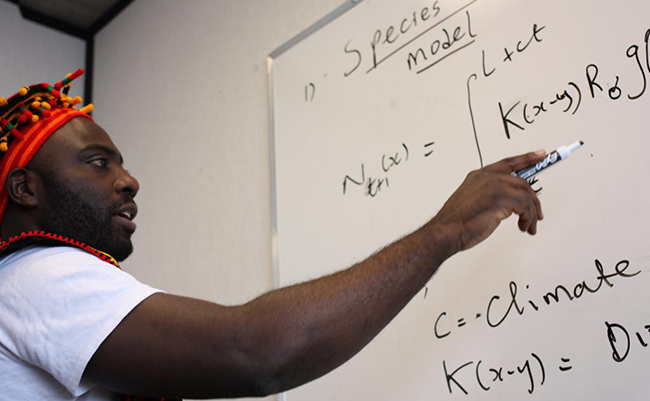
Mentorship is a valuable way of assisting Black and racialized students in overcoming barriers to pursuing and thriving in graduate scholarship, offering students personal insights and support. Mohamed Sesay and Jude Kong, two Black professors who teach courses and supervise graduate students, shared their thoughts with Innovatus on their own approaches to mentoring racialized students.
Sesay, an assistant professor of African studies and a native of Sierra Leone, views the barriers as an institutional challenge arising from their history. He realizes that universities were designed for immigrants who arrived here from 18th- or 19th-century Europe, making it clear to him that those from other cultures may find additional challenges in adjusting. He makes a conscious effort to serve as a mentor for graduate students from racialized backgrounds; eight of his 10 current graduate students are racialized.
“Institutions of higher education in western countries weren’t created for people like me,” said Sesay. “As a result, the structures, the rules and expectations, the standards and requirements were not put in place to accommodate graduate students like me or to help us thrive in the same way as non-racialized students.
“In order to do well, there are other issues for us that arise from the structures in place that someone who isn’t racialized may not be able to identify. People may not realize that many racialized students have grown up somewhere else, so they aren’t exposed to the same experiences as those who grew up in Canada. They come with a history that is different and it requires an effort to feel as if they belong to this space.”
Sesay said programs are opening space and incorporating decolonization, equity, diversity and inclusion, but “there is still a long way to go. If there were no issues with equality, we wouldn’t need DEDI.
“It’s not as if we’re compromising our standards,” he continued. “We expect racialized students to meet the same rigorous academic standards and expect them to be critical and creative thinkers, but we can’t be insensitive to other issues they’re dealing with, or they may not be able to fully realize their potential.”
In teaching and supervising racialized graduate students, Sesay takes the need to support them seriously and devotes time to connecting with them.
“I show understanding and empathy and try to share the challenges that I went through myself,” Sesay said. “I’m ready to talk with them and explore what they need to do to overcome challenges. I make myself available and, sometimes, that means talking about issues beyond research that impact academic excellence.
“I’m open to them, not dismissive. Canada is multicultural, but racialized minorities face difficulties trying to make this their home. I want to show them through my experience that it is possible for them to achieve excellence. There’s no straight roadmap or manual, but you can share understanding; you try to support them in navigating this space and boost their confidence.”
Kong, an assistant professor of mathematics and founding director of the Africa-Canada Artificial Intelligence & Data Innovation Consortium, bases his approach to mentoring racialized students on his personal experience growing up poor in rural Cameroon.
Without the emotional support from his family and financial support from the women in his community, he feels he would never have been able to attend secondary school, let alone realize that greater opportunities existed. He tries to recreate this sense of familial support with his graduate students; all four of his postdoctoral Fellows (two of whom are Black) and four of his five graduate students (four of whom are Black) are from racialized backgrounds.
“You don’t know what you don’t know,” said Kong. “You may grow up only being exposed to certain things; if you’re not aware of research, you won’t think about it; it’s not the typical subject of conversation around the dinner table. Most people choose their careers based on the signals picked up by their subconscious memories during their formative years – what is discussed at their dinner table and what they see around them. For Black students whose parents, uncles, guardians and ancestors were not exposed to these opportunities, it’s a different situation. The Black community needs more assistance to understand what the options are.”
In the classroom, as well as in the research context, “I strive to create a sense of family where students are confident in voicing their opinions, just as they would at home. It’s a judgment-free zone where they can admit that they didn’t know something or ask for assistance without the fear of being judged,” said Kong.
Kong also believes that building the students’ confidence is important, since, at a young age, they may have absorbed subconscious messages telling them that they don’t belong or can’t measure up to people from other races when it comes to fields like mathematics. He works to create an environment that is supportive, rather than competitive, because everyone has different talents.
“Keeping them moving forward and allowing them to see that they can handle the work is crucial,” he said. “We’re adding more data points to their experience until they reach that tipping point where they feel comfortable.
“I had nobody I could look up to growing up, but I had a community and allies who helped me go to school and housed me during my college days. My doctoral and postdoctoral supervisor were real advocates, and here at York, people like President Rhonda Lenton and Provost Lisa Philipps have created a structure and space to allow me to succeed. I want to help people like me who have no pathway. I want to show people who have nothing that here is someone from nowhere who has succeeded.”
He added, “York University is about giving opportunities to those who otherwise wouldn’t have it. I call it Canada’s historically Black university.”
York’s Framework on Anti-Black Racism states, “Going forward, we will be responsible and accountable to the diverse constituencies of our community including Black community members, recognizing that bringing about systemic change is everyone’s responsibility.”
Both Sesay and Kong are role models in accepting that responsibility.
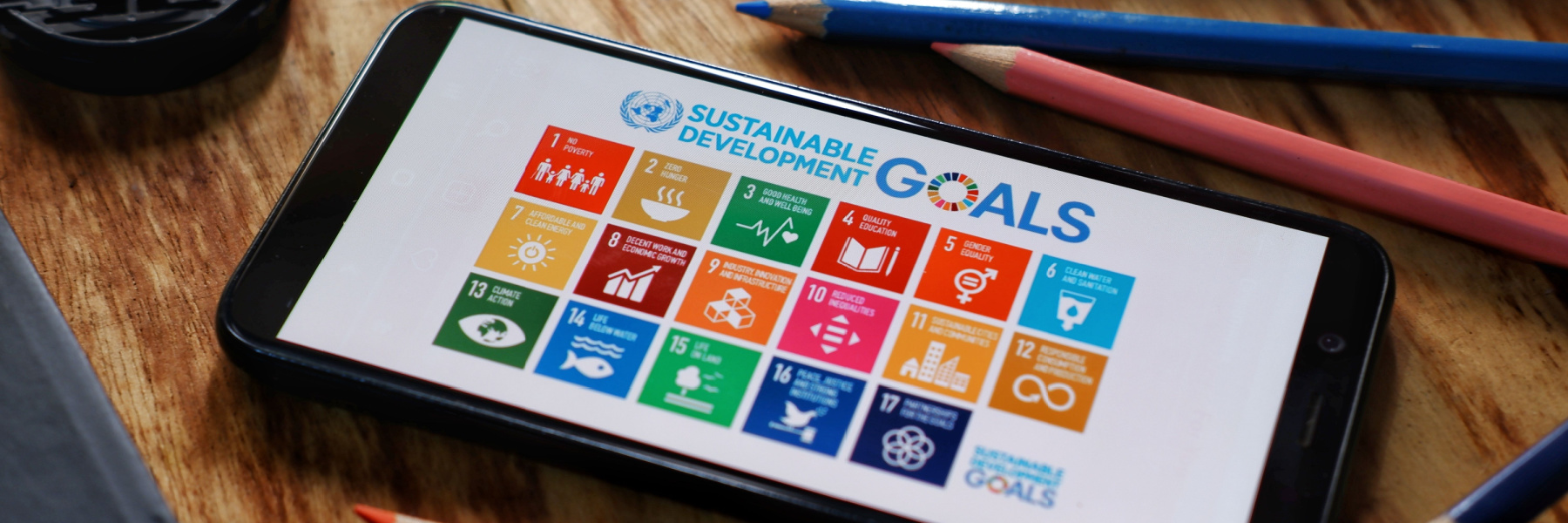
“Transforming education together: ESD-NET Global Meeting” takes place Dec. 18 to 20 and aims to highlight progress on ESD through new country-led initiatives, trends and innovations for the 2030 Agenda – an action plan to encompass the United Nations Sustainable Development Goals (SDGs).
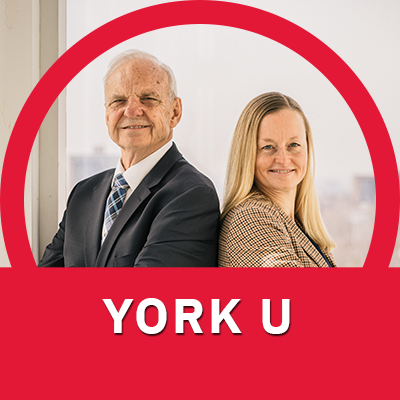
The UNESCO Chair at York focuses on developing and strengthening global networks, as well as creating and fostering research that supports responsible and inclusive policymaking in reorienting education toward sustainability in the SDGs and beyond.
In light of the global climate crisis, humans must learn to live together sustainably and change the way they think and act as individuals and societies, says Kohl. “Education has an important role to play and, in turn, must change to create a peaceful and sustainable world for the survival and prosperity of current and future generations.”
ESD has been identified by the United Nations as an empowering concept to address growing sustainability challenges. The global meeting will serve as a forum to understand how educators can enable learners to develop the knowledge and awareness to act for a better future.
Experts from around to world will unlock ideas for concrete, transformative action and identify specific interventions that can be carried out by UNESCO´s member states, says Hopkins, who will contribute perspectives on higher education’s unique roles and how the whole-institution approach, or even a whole-community approach, can come to life. Canada aims to launch its own country initiative on ESD with a pan-Canadian working group in early 2024.
The session “Stepping up ESD agenda in Higher Education: A Call to Action” aims to discuss how to enable higher education institutions to inspire societal change through the lens of education, research and innovation, and how to embed core sustainability competencies within educational programs.
Kohl will co-moderate the “Europe-North America Regional Group Discussion” to create shared projects and research focusing on transformation, technology and governance as future priorities for ESD.
The meeting will take place as a hybrid event at the United Nations University Main Campus in Tokyo. Plenary sessions on the first day will be livestreamed. For more information, visit the UNESCO web page.